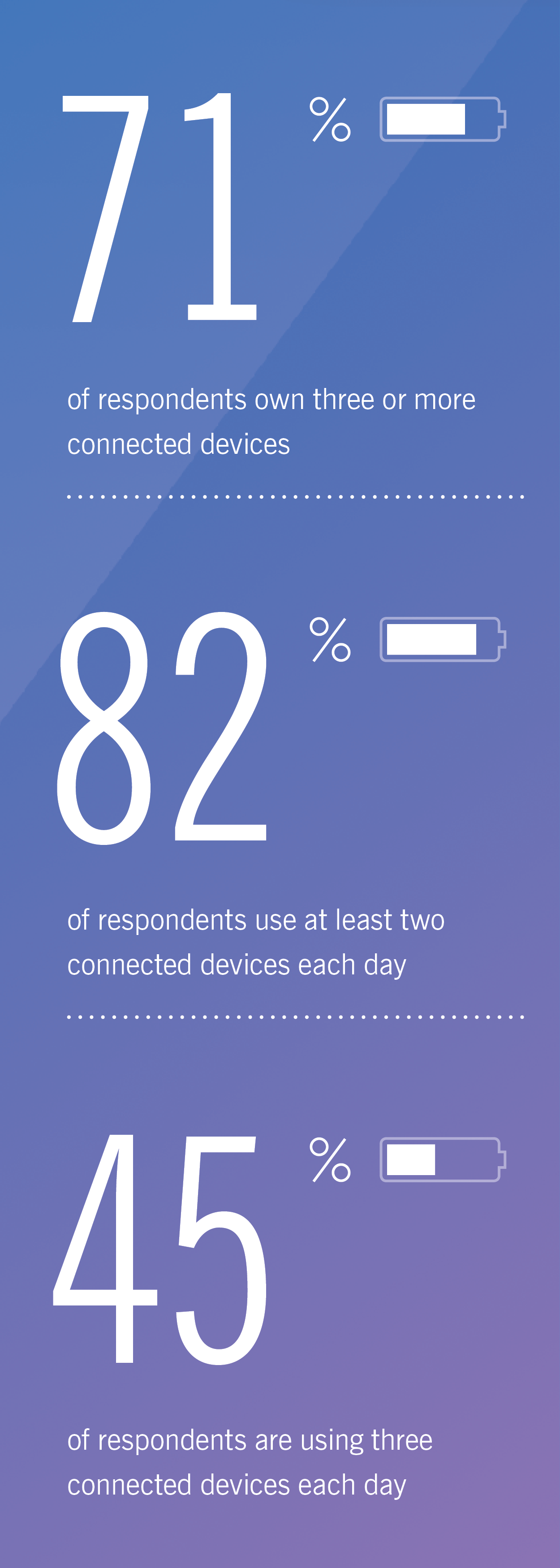Connected Devices
Even more surprising was that more than 71 percent of survey participants own three or more connected devices, and they aren’t just collecting dust on a shelf somewhere. More than 82 percent of respondents use at least two connected devices each day, and nearly 45 percent are using three each day.
Cross-Device Behavior
What does this mean for those creating products and tools to power these devices? The first takeaway concerns cross device behavior: Consumers are increasingly turning to multiple devices. Whether it is a phone while on the go, a tablet while on the couch, or a GPS-enabled watch while literally on the run, consumers aren’t afraid to use multiple devices. How do consumers pick which device to use? Fifty percent of survey respondents indicated that convenience was the No. 1 factor they considered when evaluating importance.
Focus and Simplicity
For developers, don’t focus on becoming the jack-of-all-trades (and master of none). Tailor your app or content for where the user will be when they use the device. If you make an app for salespeople in the field, what will the person absolutely need to see? Think about the digital ink on the page as precious, and try to reduce the amount you use. When evaluating connected devices in the workplace, it’s all about increasing performance, efficiency, and safety.
This simplicity carries through to consumer devices as well. When evaluating the features of connected devices, reliability and ease of use top the list. Security comes in close behind. In an increasingly complex world, if you can make your application so easy to use a help guide is unnecessary, you are most likely on the right track.
If we take simplicity and convenience a step further, how can we help reduce friction as people increasingly switch between multiple devices? Each of the major ecosystems—Microsoft, Apple, and Google—have first-class offerings to increase brand stickiness and make it easier for users to switch between devices on the same platform.
We can see that this is certainly influencing how consumers evaluate new offerings to their chosen platform as well as whether they consider other platforms. While the dominant behavior is still “wait and see,” more than twice as many people do not see a need to buy a newly released device on another platform when compared with their platform of choice.

Buying Behavior
In an unexpected twist, more than half of consumers still purchase their connected devices from brick-and-mortar locations. While online-only retailers such as Amazon are growing quickly, it’s fascinating
to see that many consumers still prefer a trip to the store to purchase their connected devices—especially given that more than 42 percent of survey participants get most of their information on new devices from online reviews.
Brick-and-mortar retailers would do well to research what helps them maintain their competitive advantage. Is it the immediate availability of devices in stock? Warranty or ability to exchange? Or another factor?
What Does It Mean?
As adoption of connected devices has increased, so too has the number of connected devices we are using. From smartphones to tablets to laptops, fitness trackers and watches, and even smart home devices, consumers are using more connected devices than ever.
With the proliferation of devices, consumers place increasing value on ease of use, convenience, and simplicity. Tailor content to not only where, but also which device is being used. Be prepared for your user to start their journey on one device and to continue it on another device.
What are the logical breakpoints where your user would switch between devices? How can you make that process seamless and easier? If you approach mobile with this in mind, you’ll make your users’ lives easier and they will reward you with their loyalty.
